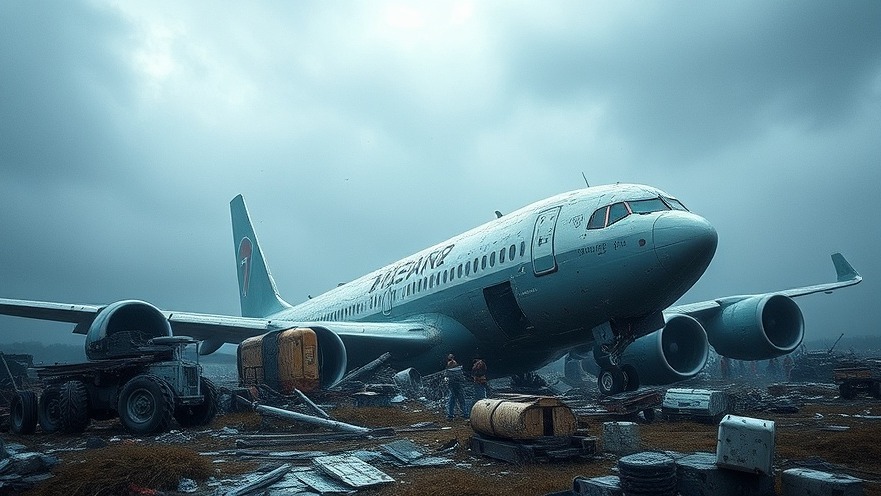
Tragedy Strikes: A Plane Crash in Russia's Far East
In a heart-wrenching incident, an Antonov-24 aircraft operated by Angara Airlines crashed in Russia’s remote Amur region on the morning of July 24, 2025, with 49 souls on board, including six crew members and 43 passengers — among them five innocent children. The flight had departed from Blagoveshchensk, heading to Tynda, when it mysteriously vanished from radar, leaving deep concerns in its wake.
The Immediate Aftermath
Local authorities quickly sprang into action after the aircraft was spotted, its fuselage engulfed in flames on a mountainside approximately ten miles from Tynda. Initial assessments from rescue teams reported no visible signs of survivors, amplifying anguish for families and loved ones awaiting news. The Amur civil defense agency was mobilizing its resources, sending a team of 25 personnel and equipment to the crash site.
Context and Background of the Region
The Amur region, located in the far eastern part of Russia and bordering China, is notable for its challenging geography and weather conditions. This makes flying particularly hazardous, particularly for older aircraft models like the Antonov-24, which has been in service since the Soviet era. Historical data indicates that this type of aircraft has been involved in its fair share of incidents over the years, raising questions about operational safety.
Flight Safety Concerns: A Broader Perspective
This tragedy sheds light on broader issues surrounding aviation safety in Russia, where aircraft maintenance and regulatory oversight have often drawn scrutiny. Experts opine that the safety of aging aircraft in remote regions necessitates rigorous standards to safeguard against catastrophic failures. The Antonov-24’s underwhelming performance record contributes to rising concerns about passenger safety in these far-flung locales.
The Human Element: Understanding the Impact
For the families of those on board, this incident is not merely a headline; it’s a devastating loss that echoes beyond statistics. Reports indicate that many relatives have gathered at the local airport in hopes of receiving news, enveloped in uncertainty and fear. Forums and social media platforms have seen an outpouring of grief, with people sharing memories and expressing condolences, which demonstrates the human cost of such tragedies.
A Call for Enhanced Aviation Safety Measures
In the wake of the crash, aviation advocates are once again calling for a reassessment of flight protocols, particularly in regions well-known for environmental challenges. Examples from global aviation practices suggest that implementing cutting-edge safety technologies and more stringent inspections could significantly lower the risk of accidents like this one. The tragic loss of life could serve as a catalyst for necessary reforms within the Russian aviation industry.
Looking Forward: Preventing Future Tragedies
As the stories of the victims surface, it becomes increasingly vital to address gaps in aviation safety. Experts assert that understanding the causes of such accidents through thorough investigations will be crucial for enhancing safety measures in the future. As authorities work on recovery efforts, the focus must transition to ensuring that lessons are learned from this tragedy — and that future flights are secured against similar fates.
Conclusion: A Nation in Mourning
The crash of the Antonov-24 marks a severe loss for the local community and stands as a somber reminder of the fragility of life. As investigations proceed, the commitment from aviation authorities to enhance safety will be paramount in preventing further calamities. It becomes essential for the global community to reflect on the implications of such accidents to advocate for improved standards universally.
 Add Element
Add Element  Add Row
Add Row 



Write A Comment